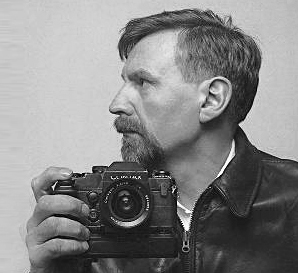Самойлов Александр Викторович (р. 1950) является одним из наиболее выдающихся и энигматичных русских художников XX - начала XXI столетий. “Чертовски утонченный фотограф”, - сказал Коул Уэстон, впервые увидев его работы.
Весомость мастера серьезна настолько, что если и проводить творческие изыскания, то его место в фотографии может быть адекватно понято только в соответствующем историческом контексте. В одной из своих статей («Заявление», 1959) фотограф Майнор Уайт, призывавший видеть в объекте, кроме того, что он есть изначально, и то, что он еще собой представляет, пишет: «Я прекрасно понимаю, что Фрейд подразумевал под понятием того незаметного разрыва в сознании, который происходит во время творческого процесса. Психологи считают этот разрыв или пробел теми короткими мгновениями, когда глубинное и не сформулированное никакими законами сознание проявляет себя и берет верх над сознанием привычным, поверхностным».
Размышления на эту тему применительно к творчеству Самойлова будут вполне уместными. Его работы в иной плоскости понимания. Философски в некоторых из них он пошел значительно дальше не только самого Майнора Уайта, но и целой плеяды его последователей, обратив внимание как в глубины самого себя, так и бытия вообще. В его жизни были такие периоды, когда он серьезно увлекался астрофизикой и часами просиживал за телескопом. Если совместить это еще и со штудированием философии Бердяева и Гегеля, то в толковании смысла его творчества, возможно, приоткроется гораздо большее количество потаенных дверей.
Интересно, что схожие глубинные искания наблюдаются и у такого классика фотографии, как Эдвард Уэстон. В дневниках фотографа, которые он вел с 1926 по 1934 г., есть запись от 24 апреля 1930 года, передающая одну из ключевых мыслей его мировоззрения: «В объекте я хочу видеть раскрытие глубочайшей тайны, что недоступна глазу, по крайней мере простого наблюдателя. Мне бы понадобился для этого микроскоп. Возможно, я его однажды и приобрету». Весьма любопытно, но, сравнив время написания Уэстоном своих дневников с периодом, когда Самойлов занимался своими исследованиями, получится, что оба начинали, будучи приблизительно в одном возрасте. Но все-таки Уэстон не пошел дальше материального обоснования своего творчества, тогда как Самойлов вышел за эти рамки, и сегодня можно заявить, что тем самым создал исключительно свое направление в фотографии.
Фотография, будучи явлением материального порядка и подчиняющаяся законам физики и химии, у Самойлова – дисциплина метафизическая. Фотограф формы, он каждое произведение выводит на тот уровень, когда все составляющие изображения начинают работать на единое целое. Чтобы проникнуться этим, надо войти в систему координат фотографа. Она – не из формулировок «нравится» или «не нравится». Она – это постоянное сомнение, наблюдение, вечное промежуточное состояние поиска вечных законов, которые, по его выражению, «есть только тогда, когда их нет».
Дмитрий Киян.
Главный редактор «Foto&Video»
2001 г. Москва
С 1973 по 1978 гг. Александр Самойлов являлся фотографом киностудии “Мосфильм”, где работал с режиссерами Андреем Кончаловским, Витаутасом Жалакявичюсом и Рустамом Хамдамовым. С 1978 года и до распада Советского Союза сотрудничал с рядом издательских домов. Его работы появлялись на страницах журналов Premier, Officiel, Elle.
| 1991 | “The First Gallery”, Moscow |
| 1997 | “Manezh” gallery, Moscow |
| 1998 | “Rossini” gallery, Moscow |
| 2007 | “Agathe Gaillard Galerie”, Paris |
| 1985 | “The Exhibition of Nine Photographers”, Moscow |
| 1993 | “Russia, Ukraine, Belorussia” exhibition, Moscow |
| 1999 | “Art-Manezh” Arts Fair, Moscow “Paris Photo” Photography Fair, Paris |
| 2000 | “Glaz” (Eye) gallery, Moscow |
| 2003 | “Masterpieces of the Russian Underground”, Lincoln Center, New York |
| 2007 | “Four Russian” Duncan Miller Gallery, Los Angeles |
| 2012 | FotoFest. Houston |
